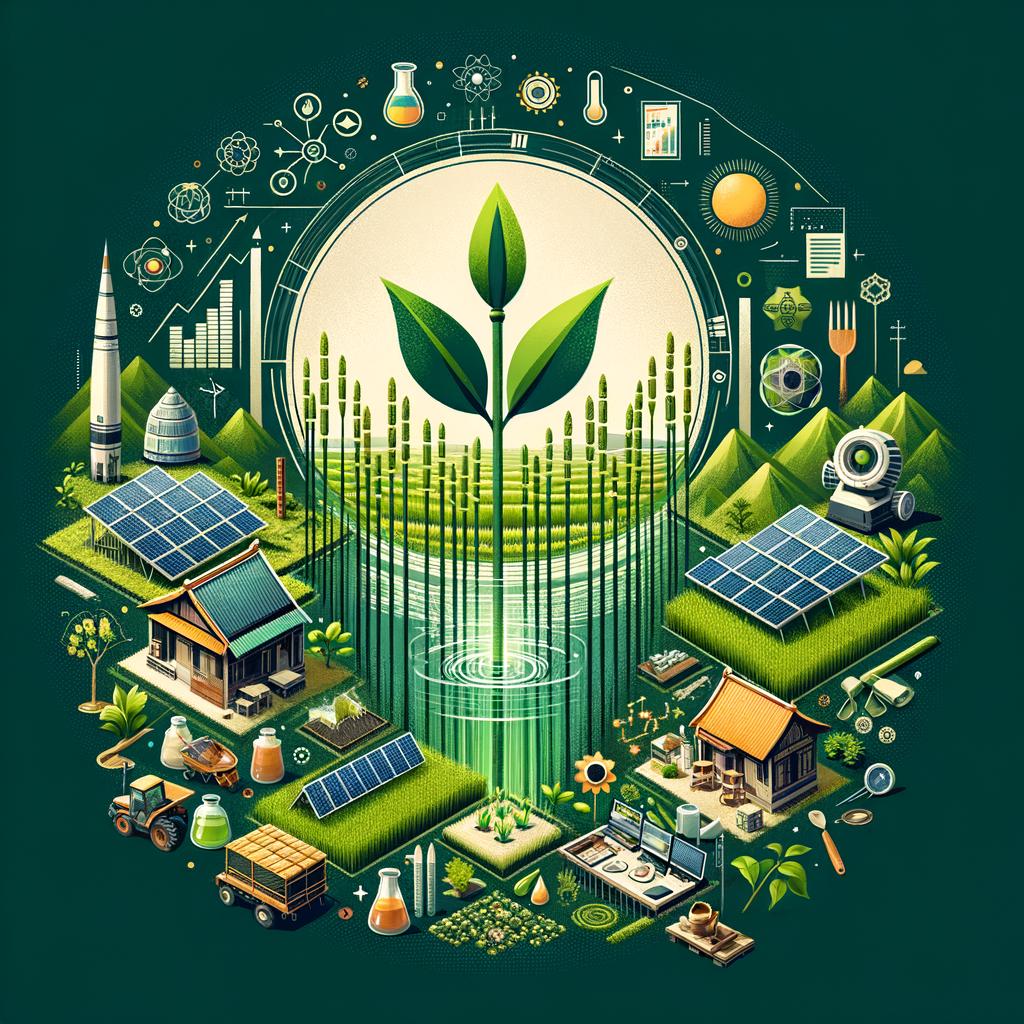In the heart of Southeast Asia lies a nation where vibrant cultures intertwine with age-old traditions, all while navigating the complexities of modern economic challenges. Vietnam, a country synonymous with resilience and transformation, has been on an inspiring journey toward rural prosperity and sustainable growth. As urban centers continue to flourish, the rural landscapes—home to a significant portion of its population—demand attention and innovative solutions. This article delves into Vietnam’s meticulously crafted blueprint for rural development, exploring the strategies, policies, and grassroots initiatives that aim to uplift its rural communities. By unpacking the layers of Vietnam’s approach, we can glean valuable insights into the potential for rural revitalization, offering a model that resonates beyond its borders and inspires a global conversation on equitable growth and sustainable livelihoods. Join us as we explore this ambitious path towards unlocking the full potential of Vietnam’s rural heartlands.
Understanding the Core Principles of Vietnams Rural Development Strategy
At the heart of Vietnam’s rural development strategy lies a commitment to sustainable growth that prioritizes community involvement and ecosystem preservation. This approach emphasizes the importance of local participation by engaging villagers in decision-making processes, which fosters a sense of ownership and accountability. The strategy centers around key pillars that include:
- Infrastructure Development: Enhancing transportation, irrigation, and energy access.
- Agricultural Innovation: Promoting modern techniques and sustainable practices.
- Social Services Expansion: Improving education, health care, and social welfare programs.
To effectively implement these principles, the Vietnamese government utilizes a framework that aligns short-term initiatives with long-term goals, cultivating resilience within rural communities. With an emphasis on both economic growth and environmental sustainability, the strategy aims to balance production with conservation. The following table illustrates the targeted outcomes and expected impacts over the coming years:
| Outcome | Expected Impact |
|---|---|
| Increased Income for Farmers | Higher living standards and reduced poverty rates. |
| Improved Access to Markets | Enhanced economic opportunities and fair trade practices. |
| Strengthened Community Networks | Greater social cohesion and collective problem-solving. |

Innovative Agricultural Practices Driving Sustainable Growth
As Vietnam strides toward rural prosperity, innovative agricultural practices have emerged as a cornerstone of sustainable growth. These practices not only enhance productivity but also foster a deeper connection between farmers and their land. By integrating technology such as precision farming, farmers can optimize resource usage, ensuring that water and nutrients are applied efficiently. Moreover, the adoption of agroforestry techniques promotes biodiversity and helps combat soil degradation, providing a multifaceted approach to farming that benefits both the environment and farmers’ livelihoods.
Additionally, the emphasis on organic farming is reshaping Vietnam’s agricultural landscape. By prioritizing natural inputs over synthetic chemicals, producers are not only meeting the growing demand for clean food but are also improving soil health for future generations. To facilitate this transition, local cooperatives are stepping up to offer training and support, creating a robust network for knowledge exchange. This collaborative effort, combined with sustainable practices like crop rotation and mixed cropping, lays the groundwork for a resilient agricultural sector poised for long-term success.
| Innovative Practices | Benefits |
|---|---|
| Precision Farming | Optimizes resources, increases yield |
| Agroforestry | Enhances biodiversity and soil health |
| Organic Farming | Meets demand for clean food, improves soil |

Empowering Local Communities for Economic Resilience
At the heart of Vietnam’s strategy for rural development lies the commitment to cultivate local enterprises and nurture talent within the communities. By implementing targeted training programs and workshops, the government seeks to equip residents with essential skills, ranging from agronomy to digital literacy. This empowers individuals to not only improve their own livelihood but also contribute to the broader economic framework. Key components of this strategy include:
- Micro-financing initiatives: Providing small loans to boost local businesses.
- Access to resources: Ensuring that farmers have the tools and education necessary to enhance productivity.
- Collaboration with NGOs: Partnering with organizations to deliver training and resources tailored to local needs.
To effectively channel investments and support, community-driven committees are being formed, enabling residents to have a voice in decision-making processes. These committees focus on identifying local needs, prioritizing projects, and fostering environments conducive to entrepreneurship. The approach is holistic, addressing not just economic activities but also the well-being of the community. A glance at some of the key initiatives reveals the potential impact:
| Initiative | Description | Expected Outcome |
|---|---|---|
| Skill Development Programs | Workshops on sustainable farming and technology use | Increased productivity and market access |
| Local Market Development | Support for farmers’ markets and local fairs | Enhanced visibility for local products |
| Cooperative Formation | Creating groups for shared resources and knowledge | Stronger bargaining power and resilience |

Harnessing Technology to Transform Rural Livelihoods
In Vietnam’s quest for sustainable rural development, technology emerges as the catalyst in transforming the livelihoods of rural communities. Smart agriculture tools, ranging from drone technology to precision farming, empower farmers to increase their productivity while minimizing waste. Mobile apps offer real-time market information, enabling farmers to make informed decisions on pricing and sales, which reduces dependency on intermediaries. Other innovative solutions such as solar energy systems provide sustainable power sources, facilitating enhanced agricultural practices and enabling small-scale enterprises to thrive. The integration of these technologies not only improves production but also ensures that rural populations are more resilient against environmental changes.
To further support rural prosperity, local governments and NGOs are actively promoting digital literacy initiatives, allowing villagers to harness these new technologies effectively. Through workshops and training, community members gain critical skills in areas like e-commerce, leading to the creation of new local markets for their products. Accompanying these efforts, a networking ecosystem is being fostered, connecting rural entrepreneurs with urban markets via online platforms. This dual approach not only boosts income but also enhances community cohesion by collaborating on shared technological advancements. Together, these innovations form a multifaceted strategy that enables Vietnam’s rural sectors to embrace modernization while preserving their cultural heritage.
To Conclude
Vietnam’s blueprint for rural prosperity and growth offers a compelling framework that intertwines sustainable practices with innovative policies. As the nation navigates its path toward economic development, the lessons gleaned from its rural transformation serve as a testament to the power of forward-thinking strategies that prioritize resilience and inclusivity. The journey ahead is not without its challenges, but the commitment to enhancing livelihoods and empowering communities outlines a future ripe with potential. By embracing a harmonized approach that respects cultural heritage while fostering modernization, Vietnam stands poised to inspire not only its own rural communities but also others around the globe striving for similar pathways to prosperity. As we continue to observe this unfolding narrative, it becomes clear that Vietnam’s rural story is one of hope, collaboration, and an unwavering belief in the promise of a brighter tomorrow.

